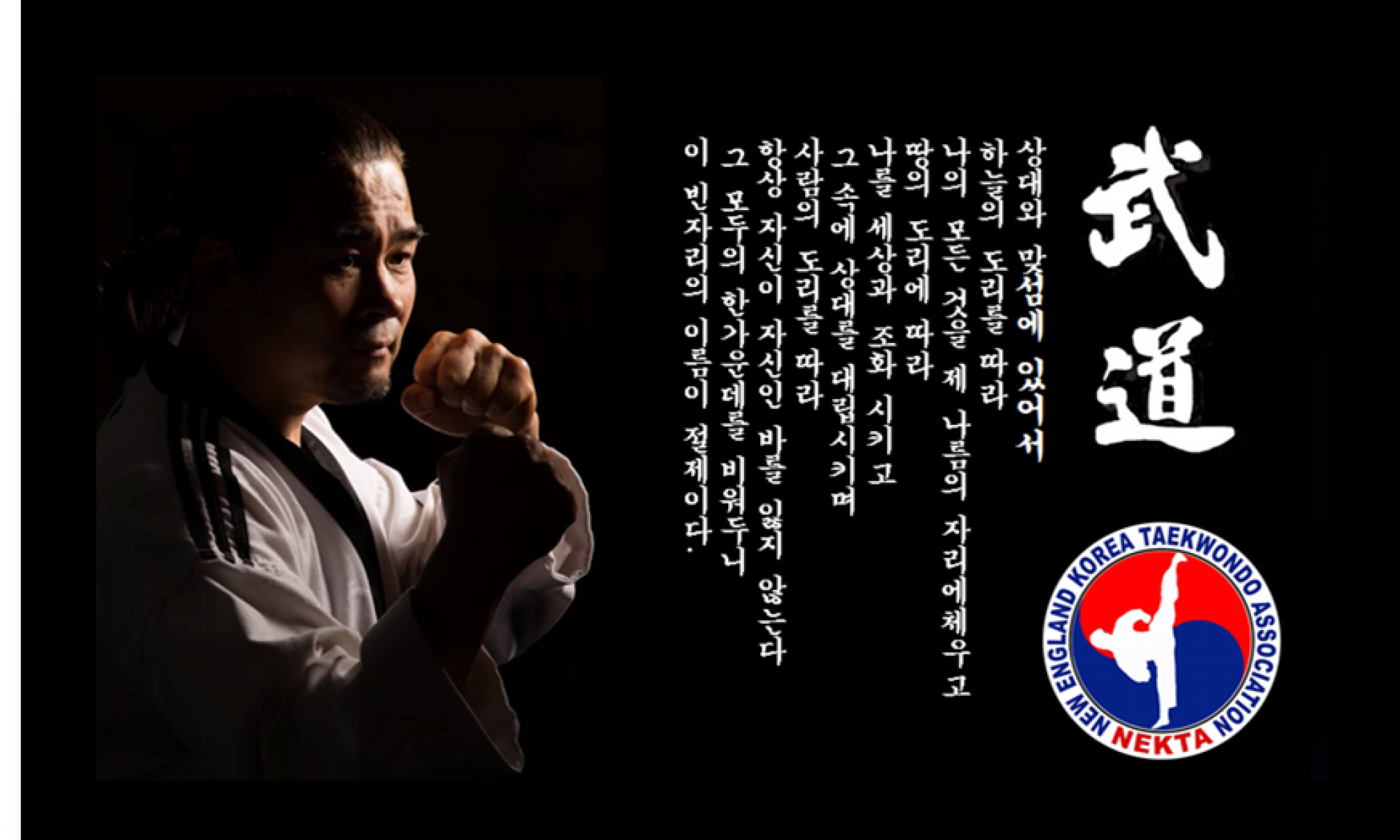
In the beginning of Taekwondo training, the practitioner encounters the dobok and learns etiquette from the Sabumnim. The dobok is a special clothing for training the mind and body in which the spirit of Korea and the centuries-old tradition is alive. So it is called a “handobok”.
The dobok consists of trousers, upper garment and belt, of which is called “Hangul”, The dobok has a similarity with traditional Korean clothes “hanbok”. The origin of the hanbok is not known. There are, however records that show the use of costumes in the period of Shilla(Samkuk Sagi), Kaya(Samkuk Yusa), and Koguryo-Paekche-Shilla periods (Saso, China), It is written in the “Koryo Tokyong” by Sukyong of early China that “people in the Konguryo Kingdom wear white costumes with black silk belts around the waist.”
It seems that the white costumes could be daily clothes for the Koguryo people. It also seems that the long upper garment and trousers must have been the same type of cloth that were found on the wall paintings in the tombs of the three kingdoms.
Taekwondo dobok which is similar to the traditional Korean clothing in the method of making, has three kinds of shapes : circle(O), square(Up), and triangle(??. The waist line of the uniform is circular shape, the cuffs square and the hip area triangular. The upper garment is made according to the same manner.
It seems that tobok which is quite different from common clothing has a tradition of conservatism, and therefore, it is reasoned that the dobok that Kokuryo people used to wear must be quite similiar to the one that people during the Tangun-choson(BC37-AD668) used to wear. It also seems that Ch’oesonin of Kokuryo and Kunson-hwarang of Shilla were from the same tradition of Tangun-choson period and that Kukjarang of Tanlgun-Chonson became the ch’oesonin of Kokuryo and Hwarang of shilla. “Won(O), symbolizes the heaven, “Bang(Up), the earth, and “Kak(??”the man.
The circle denotes the heaven, the square the earth and the triangle the man. The three symbols are the foundation of the universe (Samilshingo). The traditional Korean costumes are made based on the three symbols, and the symbols transform into the unity of the three called “han.”
The numeric concept of the Ch’onbugyong, which contains the principles of the heaven as one, the earth as two, and the man as three, brought the complete theoretical background for the formation of the traditional Korean constumes. From these conclusions, it can be reasoned that tobok has the same historical records of transformation as the traditional Korean costume has had.
According to the theory of the “Yin” and “Yang”, the man is the small universe, trousers which is Yin the earth, upper garment which is Yang the heaven, and belt the man himself, which stems from the supplies to the every aspect of the life of Koreans including in the production of all different sorts of costumes.
Tobok and hanbok have the form of no beginning and no ending and it is quite difficult to conclude that the methods of making them were designed by one person’s idea. There is some historical proof that shown the history. One example is from the article of the Choson daily Newspaper on the day 18th of april in 1990. It says that a Japanese female professor discovered a 400 year old Ch’onik Chollae p’um-male costume used during the period of Choson dynasty…..found as an original shape ……seems booty………given by the Shogun Poongshin..
At the beginning the tobok were made only in white color. In 1970, the division was made between the uniform for the under black belt and the black belt. The tobok has a V-neck shape. The p’um uniform has red-black stripes along the neck and the tan uniform only a black stripe
